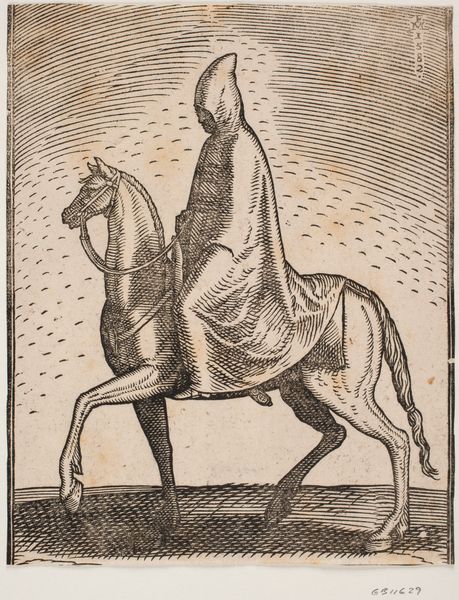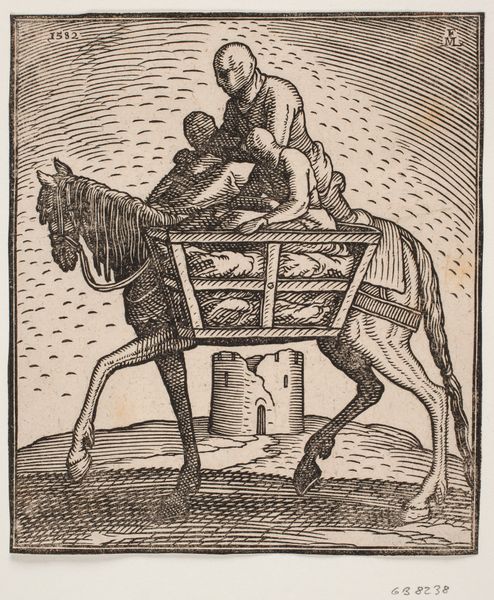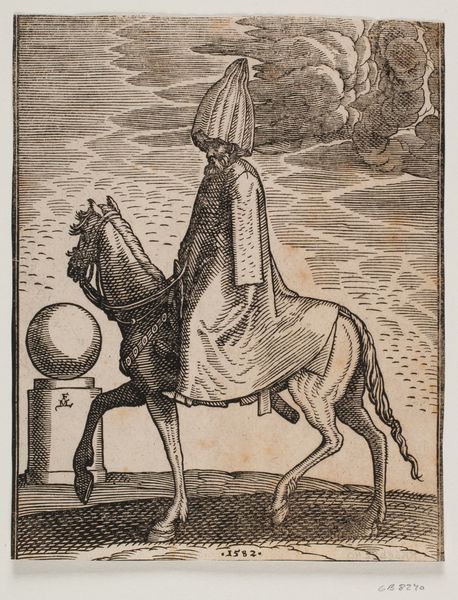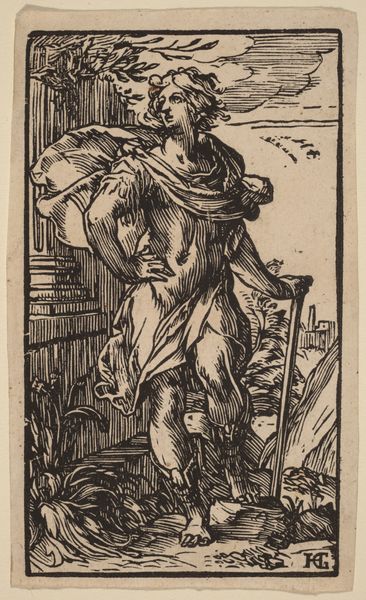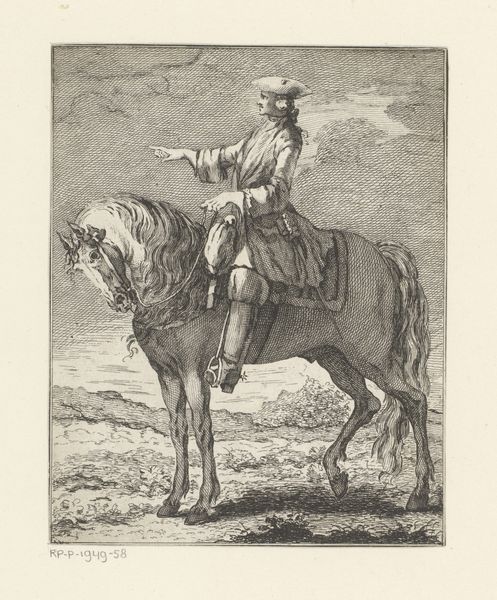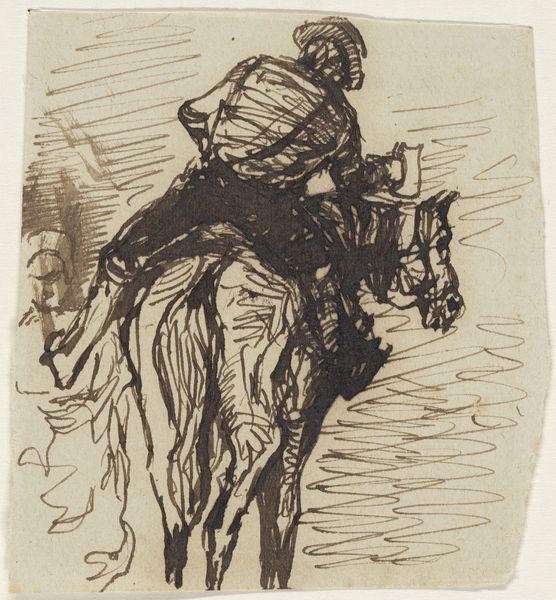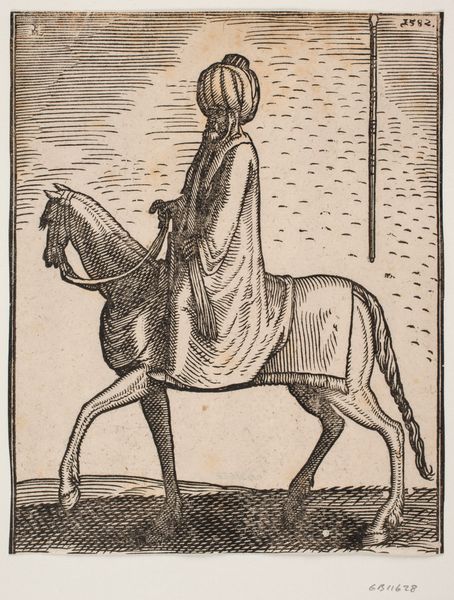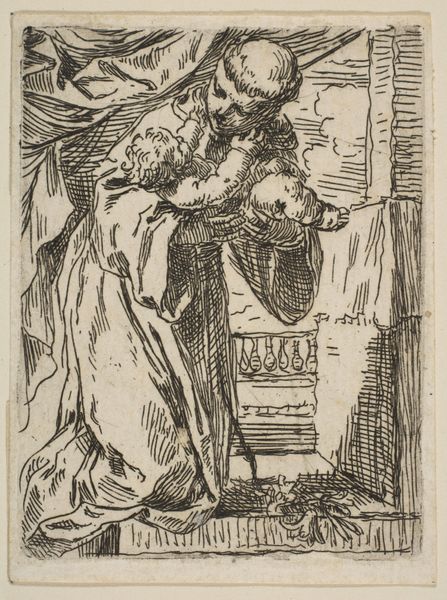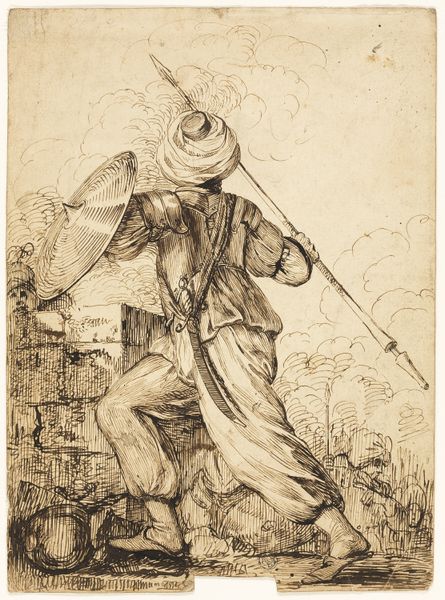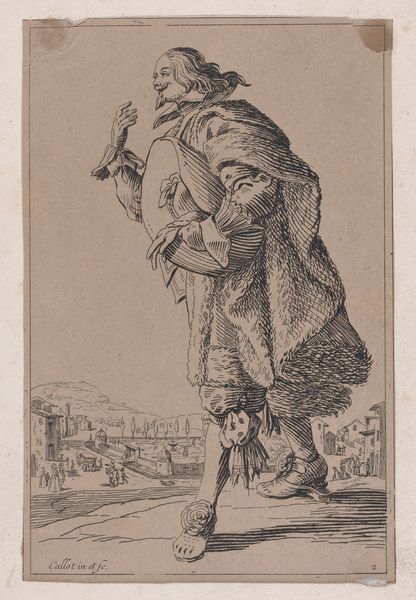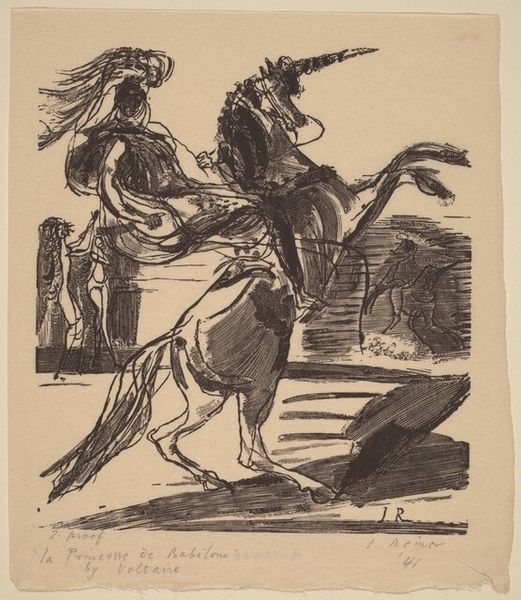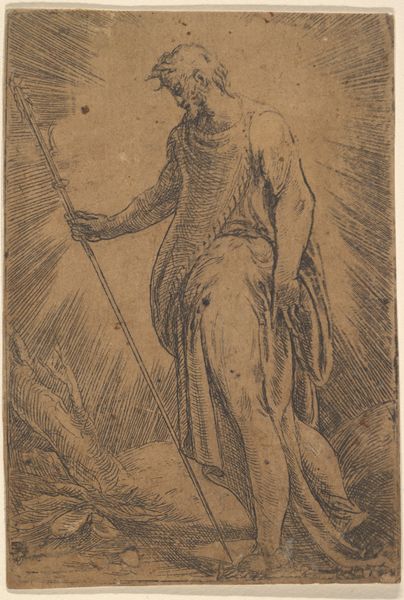
Unarmed rider on a carrier horse, seen in profile towards the left, situated on an open semi-circular plaza; he is mounted on top of a sack and holds a raised switch in his hand 1582
0:00
0:00
print, woodcut, engraving
#
portrait
# print
#
11_renaissance
#
woodcut
#
cityscape
#
engraving
Dimensions: 202 mm (height) x 167 mm (width) (bladmaal)
Editor: This is "Unarmed rider on a carrier horse," a print made with woodcut and engraving by Melchior Lorck in 1582. I’m struck by how the rider, perched high upon what looks like a sack, surveys the cityscape. What’s your take on this work? Curator: This piece offers a potent intersection between the individual and the geopolitical landscape. Lorck, working during a period of intense cultural exchange and conflict between Europe and the Ottoman Empire, presents us not just with a portrait, but a study of power, identity, and "otherness." The rider, seemingly unarmed yet holding a raised switch, occupies a liminal space—is he a figure of authority, or simply a traveler? Consider the visual rhetoric—how does Lorck employ composition to frame the Ottoman subject, and what biases might be embedded within that framing? Editor: I hadn't considered the power dynamics so directly. The "otherness" is really palpable in the sharp contrast between the figure and the city in the background. Does his stance or even his clothing give clues to his status? Curator: Absolutely. The rider's attire, specifically the turban, immediately signifies his cultural origin for a 16th-century European audience. We might ask how Lorck is actively participating in and perpetuating a dominant gaze and reinforcing existing stereotypes, perhaps contributing to an Orientalist discourse that continues to shape our perceptions even today. What happens when you think about this work in dialogue with contemporary postcolonial theory? Editor: Wow, I hadn't really thought of it like that at all, but it makes total sense. It’s interesting how much the historical context can change the entire meaning of a work like this. Curator: Indeed. And by examining these historical representations critically, we gain insight not only into the past, but also into how those power structures continue to shape our present. This isn't just an image; it's a dialogue.
Comments
No comments
Be the first to comment and join the conversation on the ultimate creative platform.

